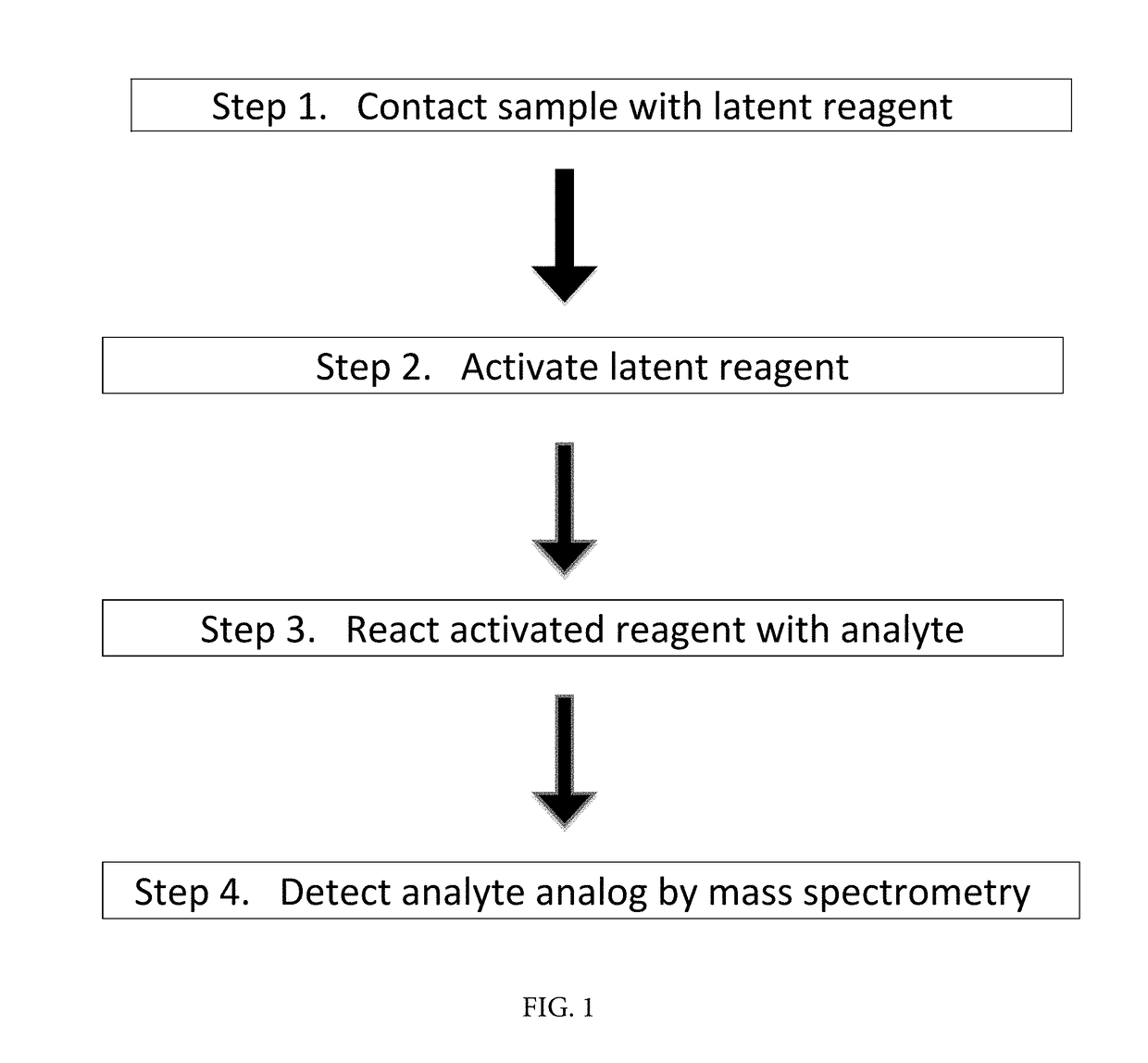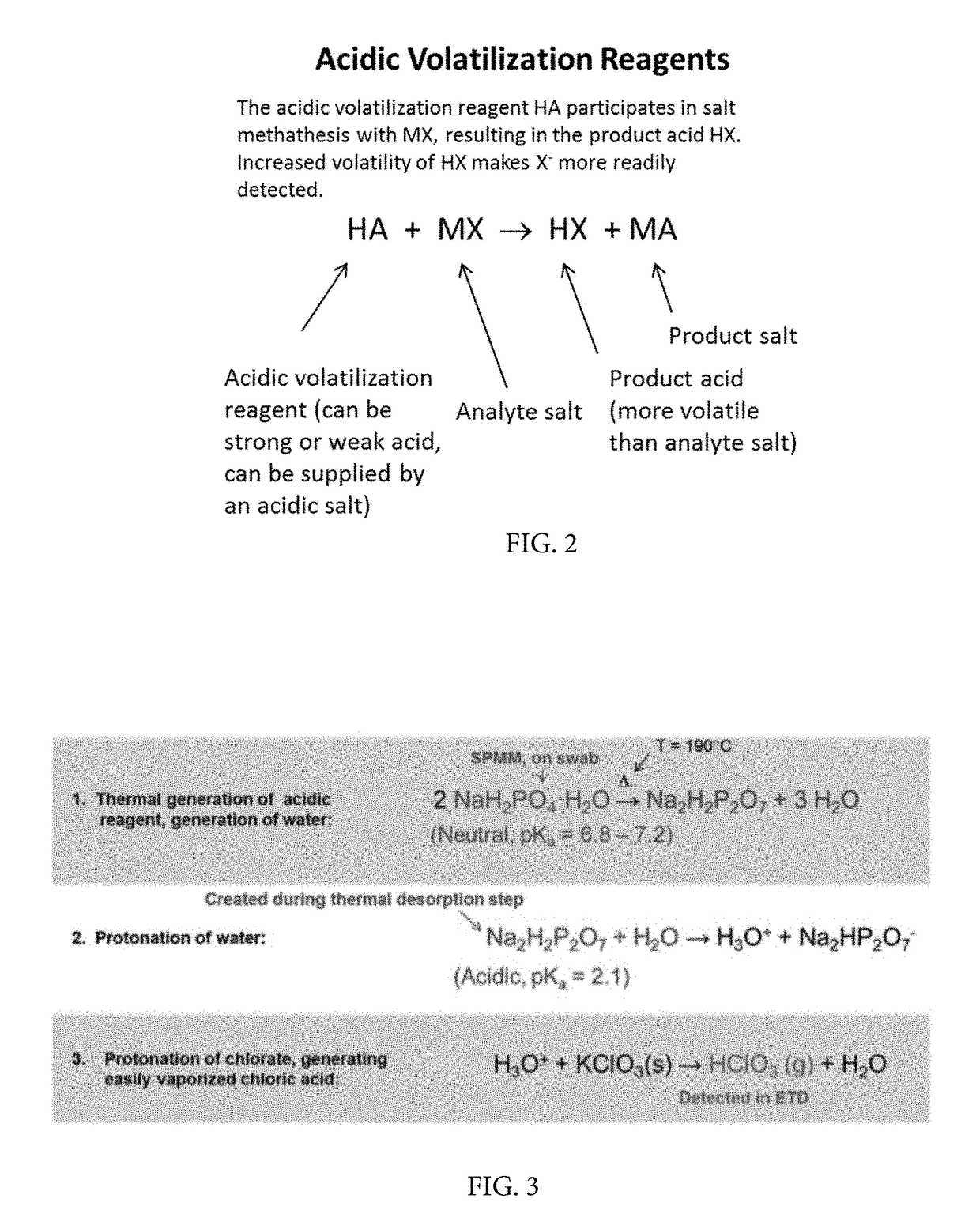Substrate Containing Latent Vaporization Reagents
- Summary
- Abstract
- Description
- Claims
- Application Information
AI Technical Summary
Benefits of technology
Problems solved by technology
Method used
Image
Examples
example 1
[0075]Detection of a trace quantity of potassium chlorate with a swab treated with a latent vaporization reagent has been demonstrated on a commercial ETD system commonly found at airports. In these measurements, a commercially available swab material was treated with about 2-4 mg of sodium phosphate monobasic monohydrate (hereafter referred to as SPMM), a pH neutral salt typically used as a food additive. In this case, SPMM is being used as an example of a latent vaporization reagent. The treatment process involved first grinding and powdering the SPMM in a mortar and pestle, sprinkling the resulting powder on the surface of a commercial ETD swab, and further grinding that material (with the pestle alone) into the weave of the swab. The treated ETD swab was then shaken / tapped in order to allow excess SPMM powder to fall away. The treated swab was then used with the ETD system as any other ETD swab would be.
[0076]Table 1 shows the performance of SPMM treated swabs for detection of a...
example 2
[0084]Ultraviolet activated swab chemistry is an alternative approach, whereby the energy required to change the latent vaporization reagent into a more acidic material is provided by UV light (or other forms of high energy radiation) rather than by a source of thermal energy.
[0085]FIG. 9 shows a scheme whereby UV energizes a latent acid (in this case a sulfonium cation ion coordinated with a sulfonate anion) and causes it to release a sulfonic acid molecule that actively participates in enhancing detection of an analyte salt. This type of swab chemistry can be used in an ETD instrument equipped with integral UV lights, or with a portable UV light source located external to the ETD instrument.
[0086]FIG. 10 provides a further example of a polymeric onium salt useful in the present invention.
PUM
 Login to View More
Login to View More Abstract
Description
Claims
Application Information
 Login to View More
Login to View More - R&D
- Intellectual Property
- Life Sciences
- Materials
- Tech Scout
- Unparalleled Data Quality
- Higher Quality Content
- 60% Fewer Hallucinations
Browse by: Latest US Patents, China's latest patents, Technical Efficacy Thesaurus, Application Domain, Technology Topic, Popular Technical Reports.
© 2025 PatSnap. All rights reserved.Legal|Privacy policy|Modern Slavery Act Transparency Statement|Sitemap|About US| Contact US: help@patsnap.com



